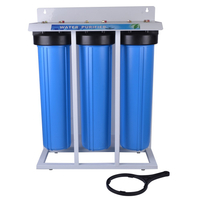Email: sales@amandawatertech.com WhatsApp: +86-13393211007
- All
- Product Name
- Product Keyword
- Product Model
- Product Summary
- Product Description
- Multi Field Search
AMANDA has 24 years of water treatment industry experience and 11 years of export experience.,it is a production and distribution company of water treatment products, production:UV sterilizer/Ozone generator/Industry and Household purification system;distribution:FRP tank/RUNXIN valve/ Water distributor/RO membrane/Industry RO membrane housing/Filter cartridge /Filter housing .



